The Army Warrior Tasks and Battle Drills (WTBD) are foundational combat skills essential for all soldiers, outlined in the 2022 manual, ensuring readiness and effectiveness in diverse combat scenarios.
1.1 Overview of the 2022 Manual
The 2022 manual provides a comprehensive framework for training soldiers in warrior tasks and battle drills, ensuring readiness for modern combat. Released in September 2021, it outlines critical tasks, including shoot, move, communicate, and survive. The manual streamlines training with 15 core tasks and 76 subtasks, focusing on essential skills for individual and unit proficiency. It serves as a doctrinal guide for commanders and trainers, emphasizing practical application and evaluation.
1.2 Historical Background and Evolution
The Army Warrior Tasks and Battle Drills (WTBD) were introduced in 2003, focusing on essential combat skills. Over time, these tasks evolved to address modern warfare needs. The 2022 manual streamlines training with 15 core tasks and 76 subtasks, organized under categories like shoot, move, and survive. This structure ensures soldiers master critical skills, reflecting the dynamic nature of contemporary combat scenarios and enhancing overall readiness.
1.3 Importance of Warrior Tasks and Battle Drills in Modern Combat
Warrior Tasks and Battle Drills are critical for ensuring soldiers’ readiness in modern combat. They provide foundational skills like shooting, moving, and communicating, enabling soldiers to adapt to dynamic threats. These tasks enhance unit cohesion, situational awareness, and decision-making under stress. By mastering these drills, soldiers can operate effectively in diverse environments, ensuring mission success and survivability. The 2022 manual emphasizes their role in building a versatile and resilient force, capable of meeting contemporary challenges.
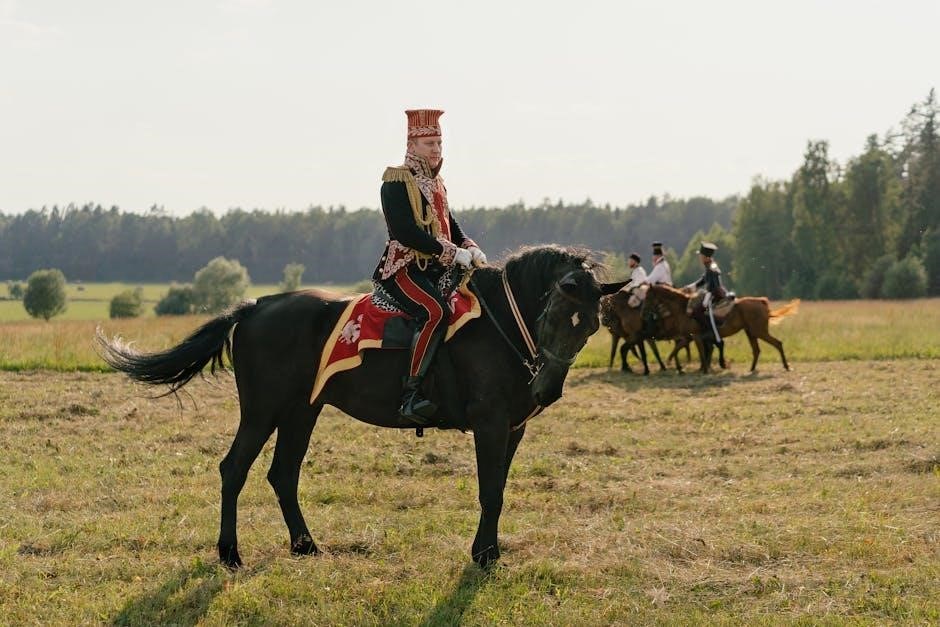
Key Components of the 2022 Manual
The 2022 manual outlines warrior tasks, battle drills, skill levels, and training objectives, providing a structured framework for mastering essential combat skills and ensuring operational readiness.
2.1 Warrior Tasks: Definition and Scope
Warrior tasks are essential individual skills soldiers must master to operate effectively in combat. They include shooting, moving, communicating, and surviving, organized into skill levels like SL1. These tasks are critical for executing unit missions and adapting to hostile environments. The 2022 manual defines their scope, ensuring soldiers are proficient in foundational combat skills, with detailed task summaries and training guidelines to enhance readiness and performance in diverse operational scenarios.
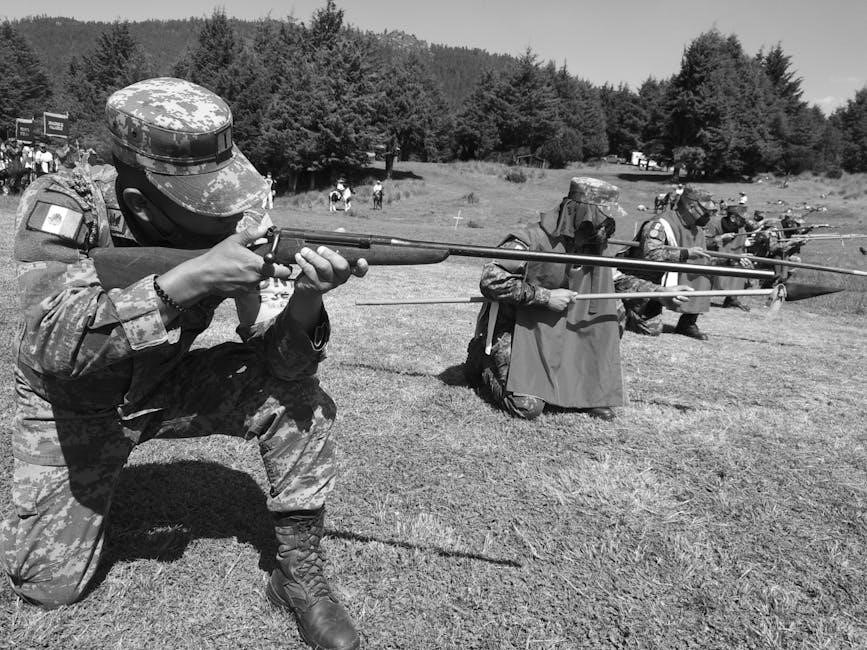
2.2 Battle Drills: Purpose and Application
Battle drills are standardized, repeatable procedures designed to train soldiers to react instinctively in combat situations. They emphasize teamwork, unit cohesion, and quick decision-making. These drills cover critical combat scenarios, such as reacting to ambushes or executing flanking maneuvers. The 2022 manual outlines their application in training, ensuring soldiers can perform them under stress. Mastery of battle drills enhances unit effectiveness and mission execution in dynamic operational environments.
2.3 Skill Levels and Training Objectives
The 2022 manual outlines skill levels, starting with basic individual skills and progressing to advanced leadership abilities. Training objectives focus on mastering tasks critical to unit readiness, ensuring soldiers can perform under stress. Skill levels are aligned with Soldier’s Manual of Common Tasks (SMCT), providing a clear progression. Training includes initial, sustainment, and evaluation phases, with specific locations and frequencies detailed to maintain proficiency and adapt to evolving combat demands effectively.
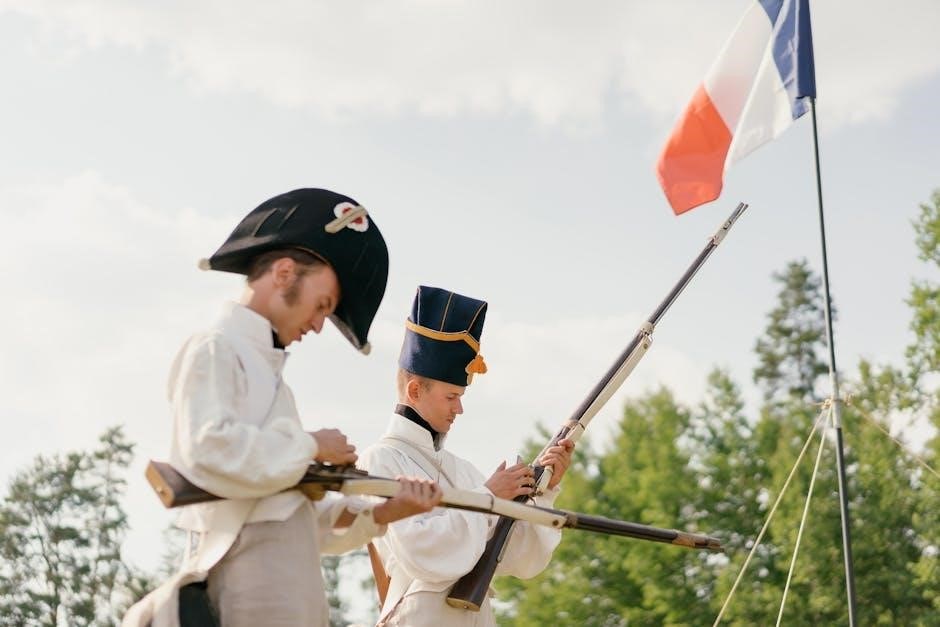
Structure of the Manual
The manual is organized to provide a comprehensive framework, detailing task summaries, critical common tasks, and training locations. It outlines frequency and methods for skill mastery.
3.1 Organization of Warrior Tasks and Battle Drills
The manual organizes tasks into categories such as shoot, move, communicate, and survive. It includes 15 warrior tasks, 76 subtasks, and 4 battle drills, ensuring clarity and accessibility. Tasks are grouped by criticality, with detailed instructions for execution. This structure allows soldiers to quickly locate and master essential skills, ensuring proficiency in combat scenarios. The organization aligns with modern military training standards, focusing on practical application and efficiency.
3.2 Task Summaries and Critical Common Tasks
Task summaries outline performance standards for warrior tasks, ensuring clarity and consistency. Critical common tasks are essential skills required for unit missions, focusing on core competencies. These tasks are prioritized based on their impact on mission success and are regularly updated to reflect evolving combat demands. The manual provides detailed instructions for each task, enabling soldiers to understand expectations and train effectively. This section ensures a standardized approach to mastering critical skills.
3.3 Training Locations and Frequency
The 2022 manual specifies training locations, including controlled environments and operational settings, ensuring realistic combat simulations. Training frequency is tailored to task complexity and mission relevance, with initial training conducted at designated sites. Soldiers must refresh skills periodically to maintain proficiency. The manual links training frequency to performance standards, ensuring readiness for diverse combat scenarios. Regular drills and evaluations are emphasized to sustain and enhance combat effectiveness.
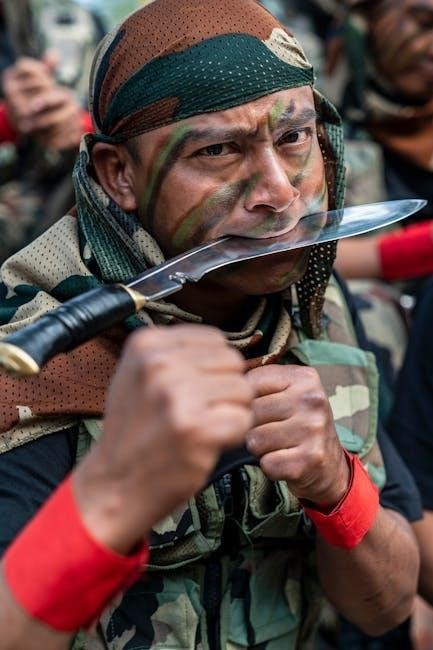
Shooting and Combat Readiness
Shooting and combat readiness are critical skills, focusing on weapon qualification, target engagement, and malfunction correction. These drills ensure soldiers can apply accurate firepower in dynamic combat situations effectively.
4.1 Qualification with Assigned Weapons
Qualification with assigned weapons is a critical skill, ensuring soldiers can safely and effectively operate their weapons. The 2022 manual outlines specific tasks, including weapon maintenance, proper handling, and target engagement. Soldiers must demonstrate proficiency through initial and sustainment training, meeting established standards to ensure combat readiness. Regular requalification is required, focusing on accuracy and efficiency in dynamic scenarios.
4.2 Engaging Targets with Precision and Accuracy
Engaging targets with precision and accuracy involves applying proven techniques to ensure effective and safe weapons employment. Soldiers must control breathing, maintain a steady aim, and align sights correctly. Training emphasizes quick and decisive engagement, minimizing collateral damage. Proficiency in dynamic scenarios is crucial, requiring soldiers to adapt to changing conditions while maintaining focus. Continuous practice and evaluation ensure high standards of marksmanship, enabling soldiers to perform reliably in combat situations.
4.3 Malfunction Correction Procedures
Malfunction correction procedures are critical for maintaining operational readiness. Soldiers must quickly identify and resolve weapon malfunctions to ensure continuous engagement capability. The 2022 manual outlines step-by-step processes for clearing jams and restoring functionality. Training emphasizes immediate action drills, such as the “tap-rack-bang” method, to address stoppages swiftly. Proficiency in these procedures is essential for maintaining lethality in dynamic combat scenarios and minimizing downtime during critical operations.
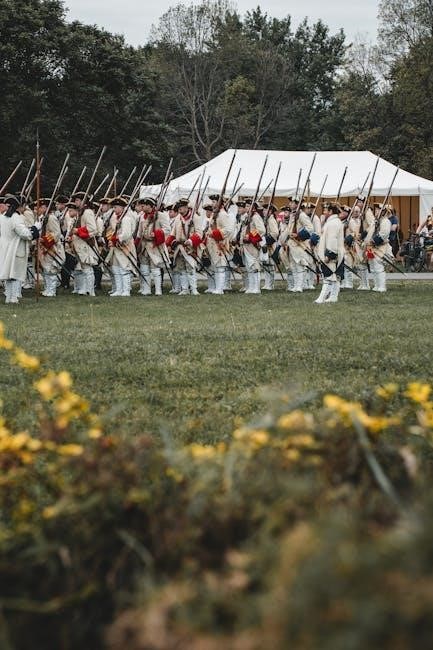
Movement and Navigation
Movement and navigation are essential skills, enabling soldiers to traverse challenging terrain, use map-reading techniques, and employ GPS for precise combat positioning and situational awareness.
5.1 Moving Over, Through, or Around Obstacles
Moving over, through, or around obstacles is a critical skill, enabling soldiers to navigate challenging terrain effectively. Techniques include traversing walls, ditches, and barbed wire while maintaining situational awareness. Proper use of equipment, such as ropes and ladders, is emphasized to ensure safety and efficiency. Soldiers are trained to adapt their movement based on environmental conditions and enemy presence, ensuring mission success and personal survival in combat scenarios.
5.2 Terrain Association and Map Reading Skills
Terrain association and map reading are essential skills for navigating combat environments. Soldiers learn to identify terrain features, use topographic maps, and apply GPS navigation to determine their position and plan routes. These skills enhance situational awareness, enabling precise movement and coordination during missions. Effective terrain association ensures soldiers can operate in diverse environments, from urban to rural settings, maintaining operational effectiveness and safety in dynamic combat scenarios.
5.3 GPS Navigation in Combat Scenarios
GPS navigation is a critical skill in modern combat, enabling soldiers to determine their position, plan routes, and navigate accurately in diverse environments. The 2022 manual emphasizes the use of GPS devices to enhance situational awareness and operational effectiveness. Soldiers are trained to integrate GPS navigation with map reading and terrain association, ensuring precise movement and coordination during missions. This skill is vital for maintaining orientation in low-visibility or unfamiliar terrains, supporting successful mission execution.
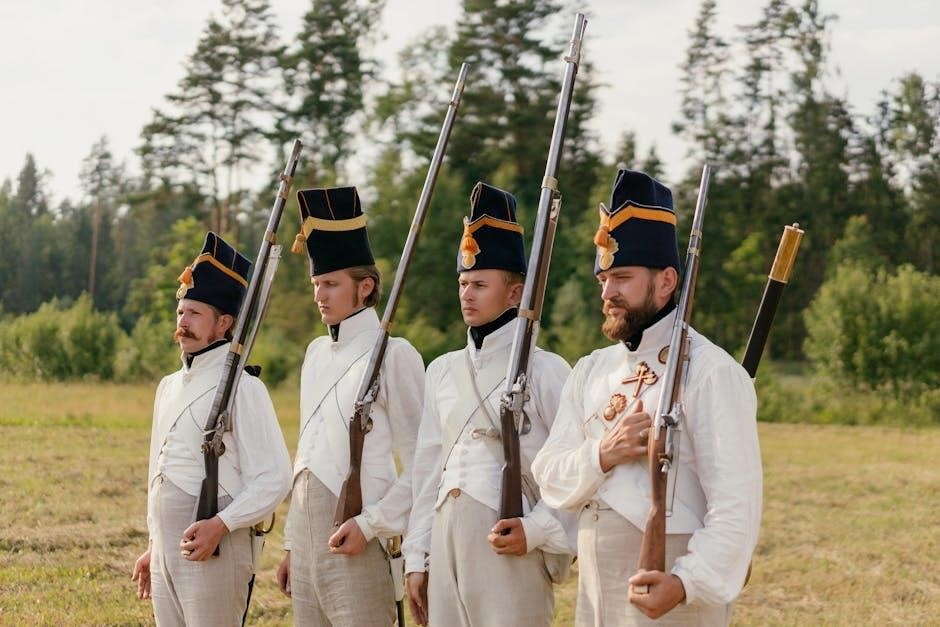
Communication and Teamwork
Effective communication and teamwork are crucial for mission success, ensuring seamless coordination, clear leadership, and optimal use of communication equipment in dynamic combat environments.
6.1 Effective Communication in Combat Situations
Effective communication in combat ensures clear messaging, active listening, and situational awareness. Soldiers use standard terminology, hand signals, and communication equipment to convey critical information. Adapting communication methods to the environment, such as using radios or visual signals, enhances mission execution. Leadership emphasizes concise and accurate reporting to maintain coordination and decision-making. Proper communication protocols are essential for reducing errors and ensuring seamless teamwork in high-stress scenarios.
6.2 Team Coordination and Leadership Roles
Team coordination and leadership roles are critical for mission success. Leaders assign responsibilities, make decisions, and ensure tasks are executed effectively. Soldiers understand their roles within the team, fostering accountability and trust. Effective leadership promotes discipline, clear communication, and adaptability. Leaders prioritize training to enhance team dynamics, ensuring seamless execution of warrior tasks and battle drills in dynamic combat environments.
6.3 Use of Communication Equipment
Proficiency in using communication equipment is vital for maintaining situational awareness and coordination. Soldiers are trained to operate radios, satellite devices, and other systems securely. Proper communication ensures clear transmission of orders and intel, enabling effective teamwork. The 2022 manual emphasizes mastering these skills to maintain operational security and adapt to evolving combat scenarios, ensuring seamless information flow between units and command centers.
Survival and Adaptation
Survival and adaptation skills are critical for enduring hostile environments. Soldiers learn to navigate, sustain themselves, and adapt to changing combat conditions, ensuring resilience and mission continuity.
7.1 Surviving in Hostile Environments
Soldiers must master skills to survive in hostile environments, including terrain association, navigation, and obstacle movement. They learn to sustain themselves, procure water and food, and protect against environmental hazards. These techniques ensure operational effectiveness and personal safety in austere conditions, aligning with the 2022 manual’s emphasis on resilience and adaptability in combat scenarios.
7.2 Adapting to Changing Combat Conditions
Soldiers must adapt swiftly to evolving combat scenarios, demonstrating flexibility in tactics and decision-making. This includes assessing situations, prioritizing actions, and applying varied techniques to maintain operational effectiveness. The 2022 manual emphasizes situational awareness and the ability to adjust strategies, ensuring soldiers remain proactive and resilient in dynamic environments, thereby enhancing mission success and personal safety.
7.3 First Aid and Casualty Care
First aid and casualty care are critical skills for soldiers, enabling immediate treatment of injuries in combat. The 2022 manual outlines procedures for controlling bleeding, applying tourniquets, and stabilizing fractures. Soldiers are trained to provide care under fire, prioritize wounds, and prepare casualties for evacuation. These skills enhance survival rates and maintain unit combat effectiveness, ensuring wounded personnel receive timely and effective treatment in high-stress environments.
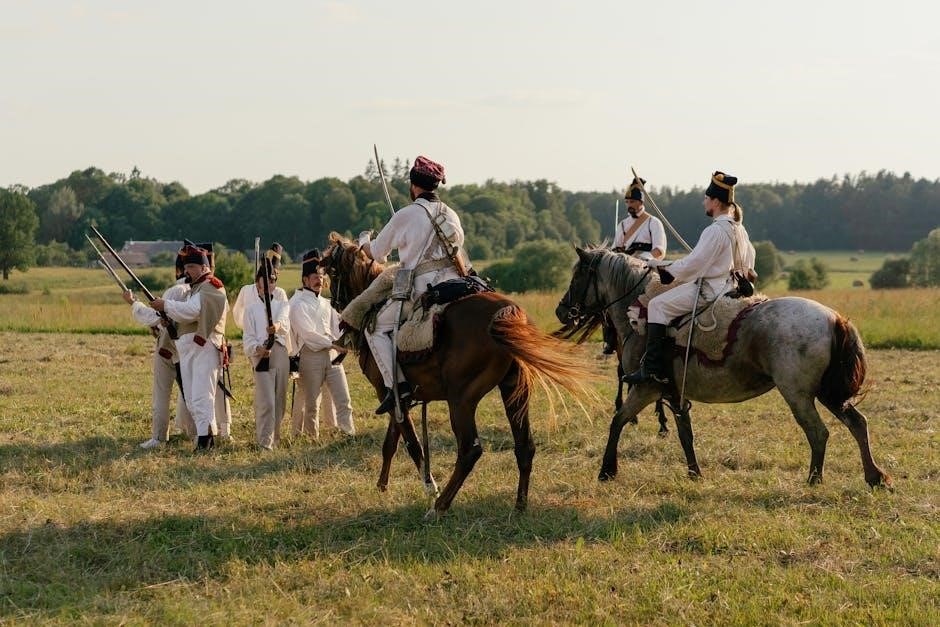
Training and Evaluation
Training and evaluation are systematic processes using the 2022 manual and STP 21-24-SMCT to ensure soldiers master warrior tasks and battle drills effectively, with continuous improvement emphasized.
8.1 Planning and Conducting Training Sessions
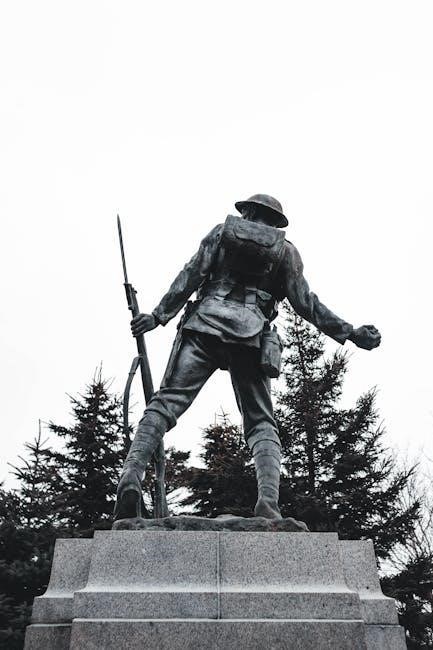
The 2022 manual provides detailed guidance for commanders to plan and execute effective training sessions for warrior tasks and battle drills. It emphasizes systematic preparation, ensuring alignment with doctrinal standards and safety protocols. Training sessions are structured to address specific skill levels, with clear objectives and evaluation metrics. Resources, such as STP 21-1-SMCT, are utilized to ensure comprehensive coverage of critical tasks. Regular training ensures soldiers achieve and maintain proficiency in essential combat skills.
8.2 Evaluation Metrics and Performance Standards
Evaluation metrics and performance standards are clearly defined in the 2022 manual to assess soldier proficiency in warrior tasks and battle drills. Performance measures align with task-specific criteria from the Central Army Registry (CAR). Soldiers are evaluated on their ability to execute tasks accurately and safely, with results documented to track progress. These standards ensure consistency and readiness, providing a clear framework for identifying strengths and areas needing improvement in combat skills.
8.3 Continuous Improvement of Training Methods
The 2022 manual emphasizes continuous improvement of training methods through feedback and adaptation. Training sessions are refined to address emerging combat scenarios and soldier feedback. Advanced technologies, such as simulations and virtual training tools, are integrated to enhance learning. Regular updates to training materials ensure alignment with current doctrine and operational requirements, fostering a culture of ongoing development and operational readiness.
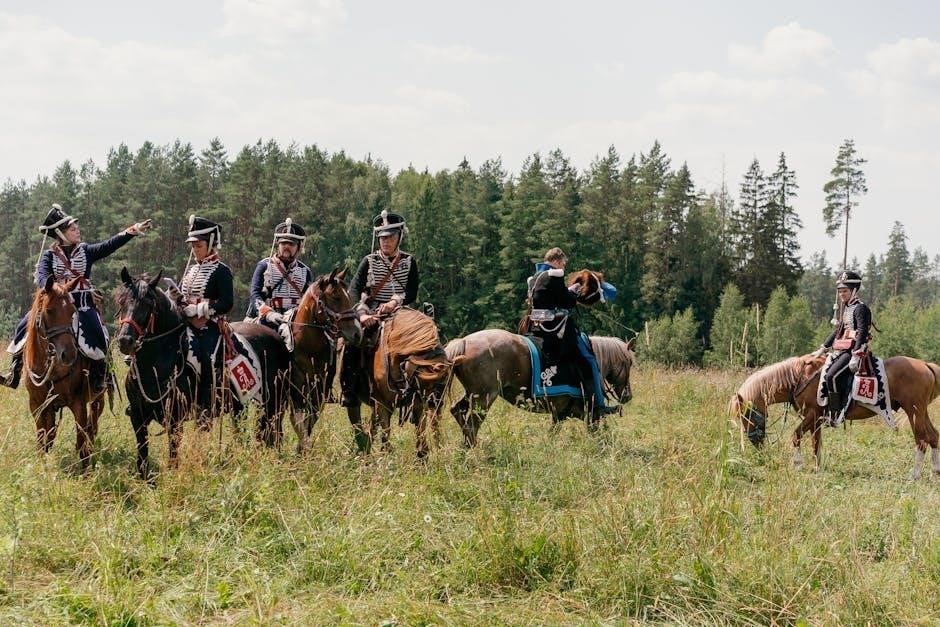
Resources and References
Official Army publications, including STP 21-1-SMCT, provide detailed guides for warrior tasks and battle drills. Additional training materials and online platforms offer further learning resources for soldiers and trainers.
9.1 Official Army Publications and Links
The Army Publishing Directorate provides official publications, including STP 21-1-SMCT, which outlines warrior tasks and battle drills. These resources are accessible online, offering essential training guides for soldiers and instructors to master the skills detailed in the 2022 manual.
9.2 Additional Training Materials and Guides
Beyond official manuals, soldiers can access supplementary training materials like the U.S. Army Small Unit Tactics Handbook and field manuals. These resources, available through Army Knowledge Online and other official platforms, provide in-depth guidance on mastering warrior tasks and battle drills, ensuring comprehensive preparation for combat scenarios.
9.3 Online Platforms for Further Learning
Online platforms like Army Knowledge Online and Defense Technical Information Center offer extensive resources for warrior tasks and battle drills. These platforms provide access to manuals, training guides, and interactive tools. Additionally, websites like ROTC programs and military education portals offer supplementary materials, including flashcards and video tutorials, to enhance learning and proficiency in combat readiness skills.
The 2022 Army Warrior Tasks and Battle Drills manual is a critical resource for modern combat readiness, ensuring soldiers master essential skills for mission success and survival.
10.1 Summary of Key Points
The 2022 Army Warrior Tasks and Battle Drills manual is a critical resource for ensuring combat readiness. It outlines essential skills for mission success and survival, emphasizing adaptability, communication, and precision. Soldiers are expected to master tasks like shooting, moving, and first aid, while leaders must prioritize effective training and evaluation. This guide serves as a foundational tool for modern military operations, ensuring unity and preparedness across all units.
10.2 The Role of Warrior Tasks in Modern Military Training
Warrior tasks form the foundation of modern military training, ensuring soldiers are mission-ready. These skills emphasize adaptability, communication, and precision, critical in dynamic combat environments. The 2022 manual integrates these tasks into training programs, fostering combat effectiveness and unit cohesion. By mastering warrior tasks, soldiers enhance their ability to execute missions successfully, ensuring readiness for diverse operational demands and maintaining the Army’s competitive edge in contemporary warfare.
10.3 Future Developments in Combat Readiness
Future developments in combat readiness will focus on integrating advanced technologies, such as AI and augmented reality, to enhance training. The 2022 manual highlights evolving threats and the need for adaptive tactics. Soldiers will prioritize real-time data analysis, improved communication systems, and sustainable training methods. These advancements aim to ensure the Army remains agile and lethal, addressing modern battlefield challenges while maintaining the highest standards of performance and readiness.